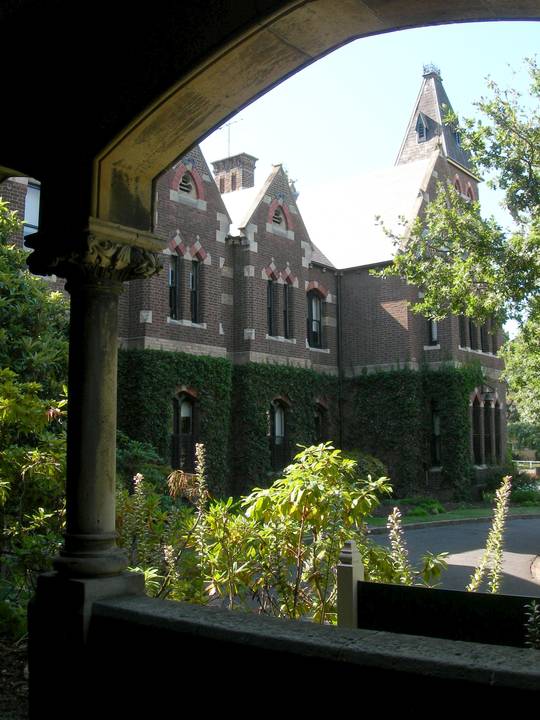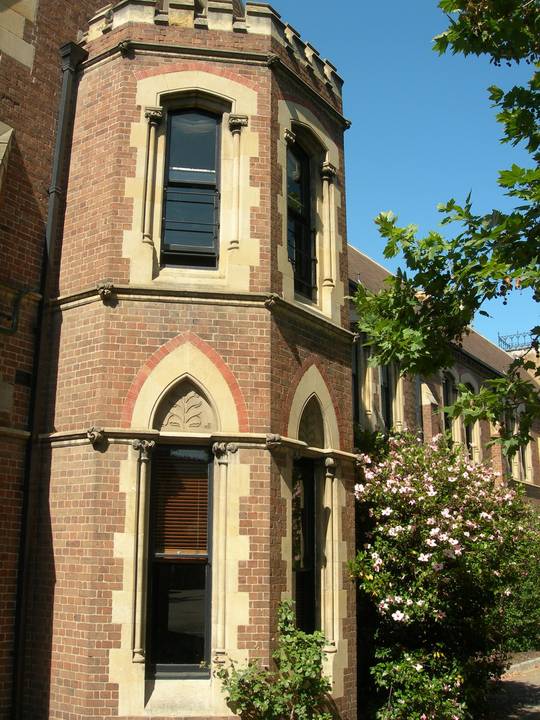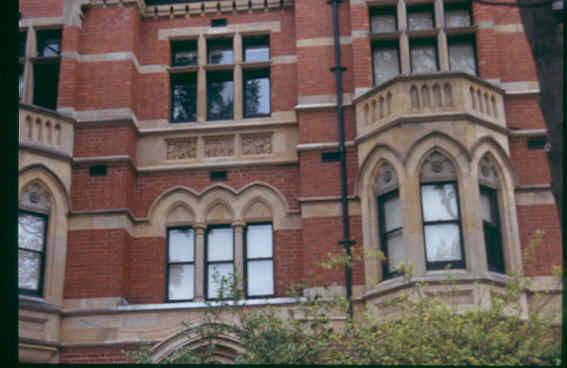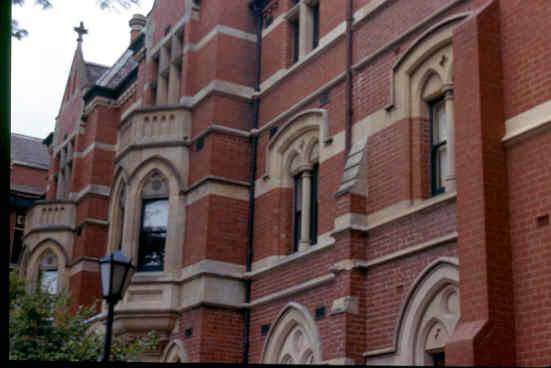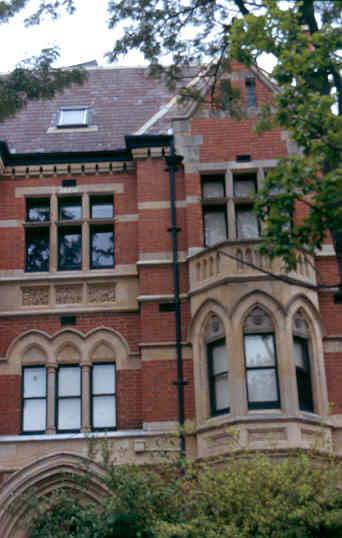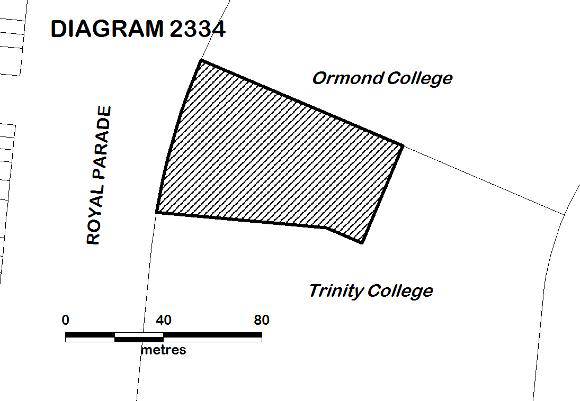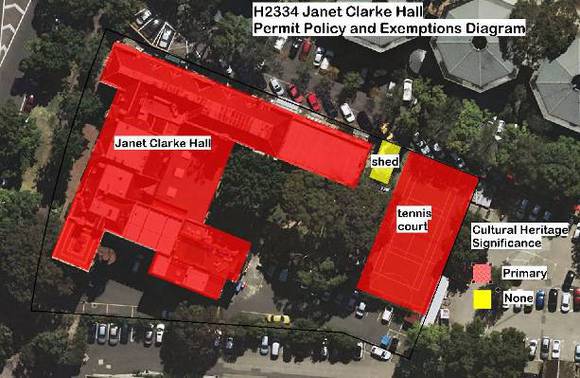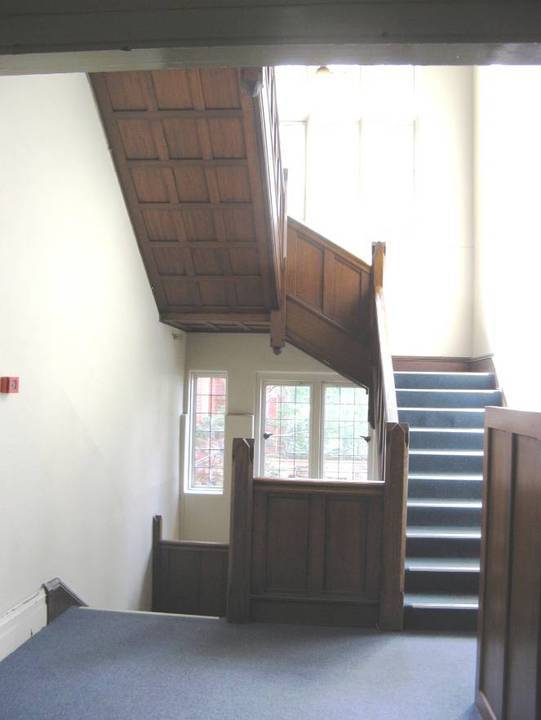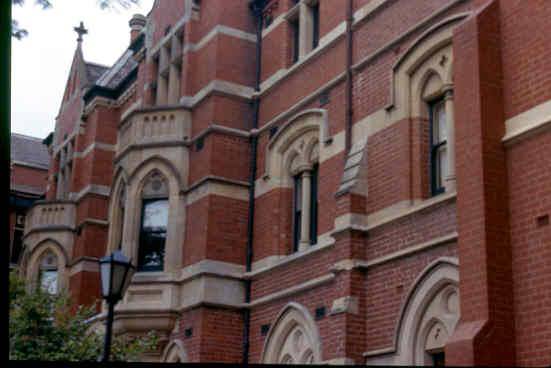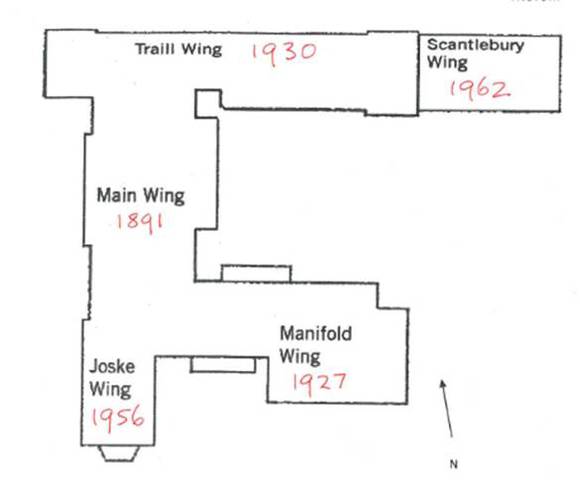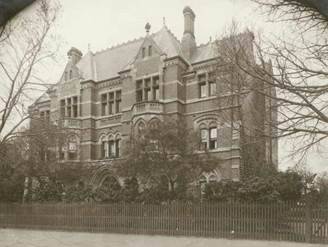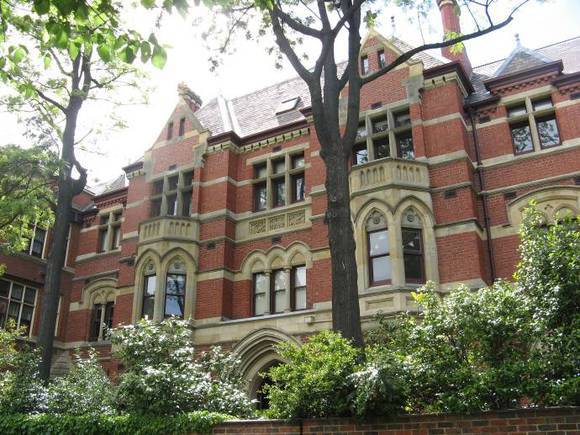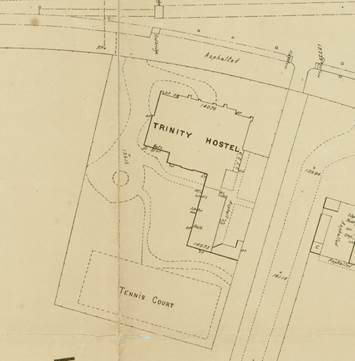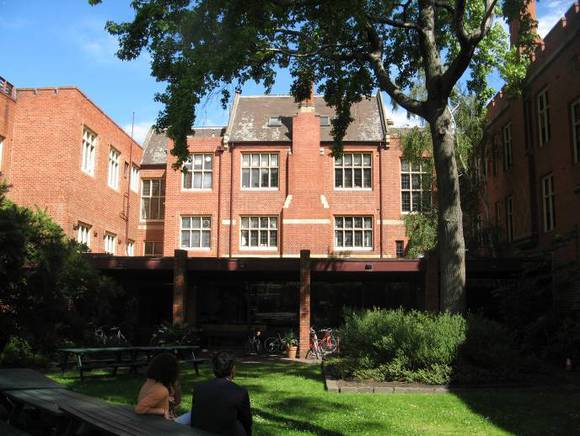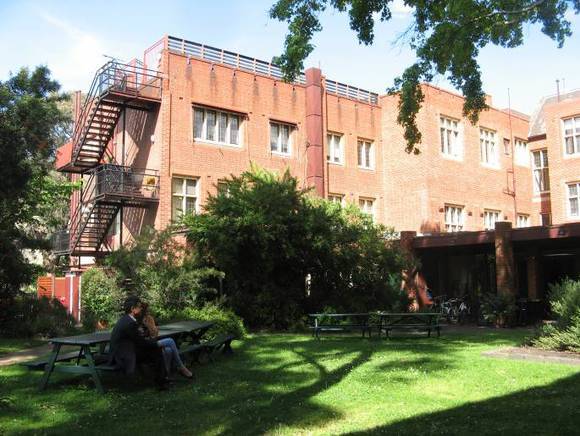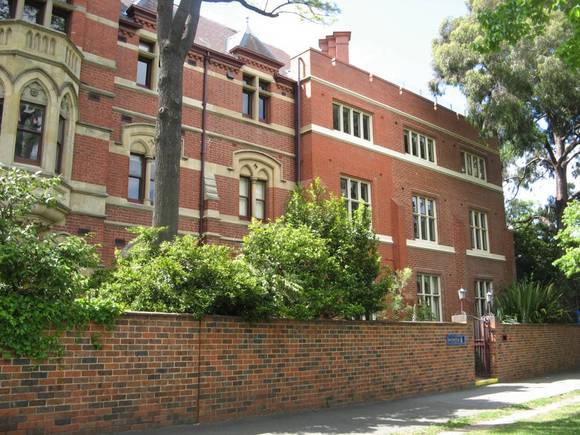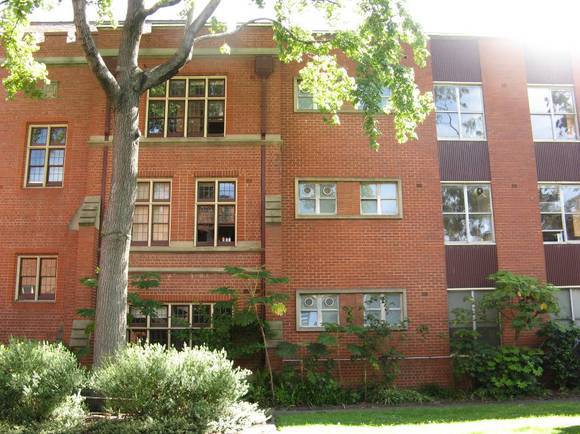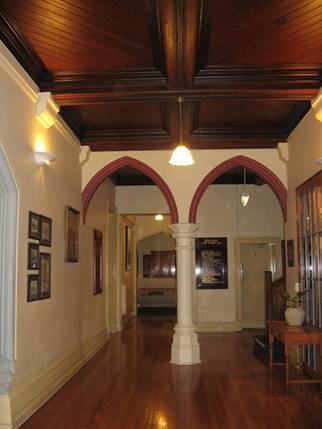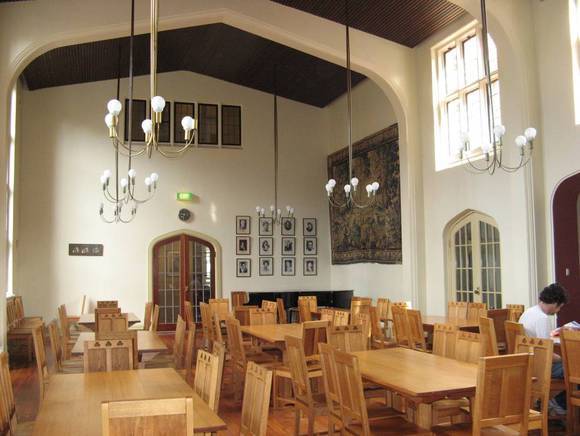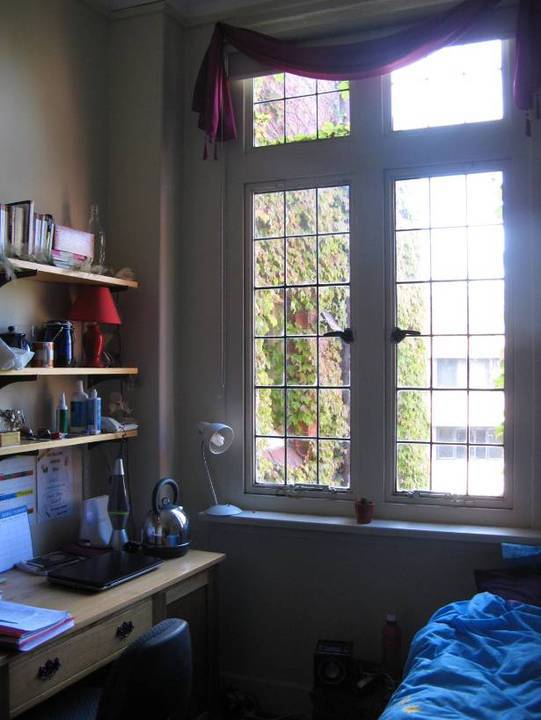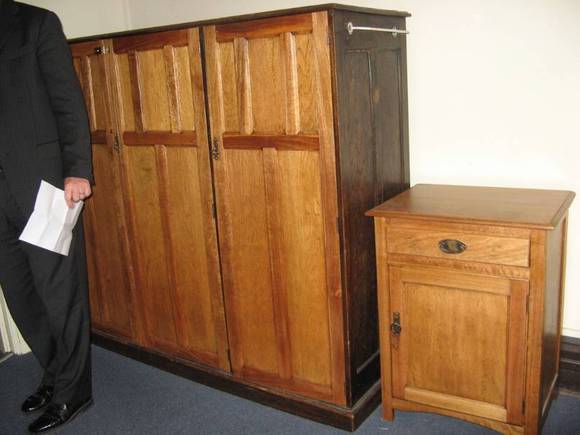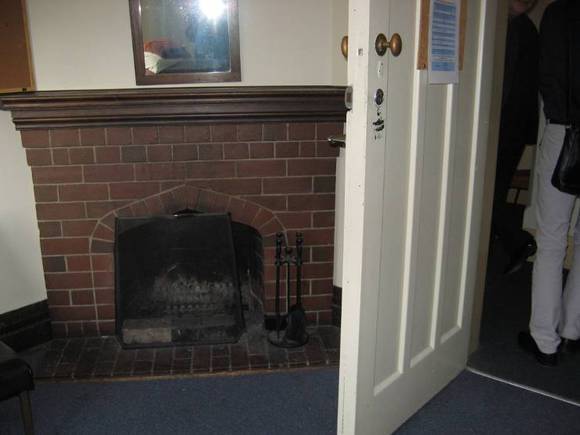| Back to search results » | Back to search page » |
|
JANET CLARKE HALL
Statement of Significance
What is significant?
Janet Clarke Hall, a residential College of the University of
Melbourne, including the 1891 main wing fronting Royal Parade, the
1927 Manifold Wing, the 1929 Traill Wing, the 1956 Joske Wing, the
1962 Scantlebury Wing and the tennis court at the rear.
History Summary
The University of Melbourne was founded in 1853 but accepted female
students only from 1881. University residential colleges were
established to the north of the university, with the first, Trinity
College, opening in 1872. Trinity accepted women as non-resident
members from 1883, but its first Principal, Alexander Leeper, became
convinced of the need for a residential women's college at the
university. In 1886 he submitted a proposal for a women's hostel on
land in the north-west corner of the Trinity College grounds. The
construction of the first building on the site, known as Trinity
College Hostel (later the main wing of Janet Clarke Hall), was made
possible by donations of £5,000 from Janet Lady Clarke, the wife of
Sir William Clarke and a generous philanthropist, and of £2,000 from
Sir Matthew Davies. The design of the architect Charles D'Ebro was
chosen for the Hostel, it was built by Thomas Corley, and was opened
by the Governor Lord Hopetoun on 15 April 1891. The tennis court,
which provided recreation for the students, was built before 1897. The
name of the Hostel was changed in 1921 to Janet Clarke Hall, to
acknowledge the role played by Janet Lady Clarke in its establishment.
In 1927 a bequest from the pastoralist William Manifold made possible
the construction of a new wing to the south-east, designed by the
architects Blackett & Foster and built by Thompson & Chalmers.
The Traill Wing to the north, named after the former student and major
donor Elsie Traill and designed by the architectural firm A & K
Henderson, was added in 1930. Another wing, designed by W Forsyth and
built in 1954, was named after Enid Joske, a former student and the
College Principal for twenty-five years. In 1961 Janet Clarke Hall
broke its link with Trinity College and declared itself independent.
The last major addition to the Hall was the Lilian Scantlebury Wing,
named after the Hall Committee Chair and designed by Forsyth &
Richardson, which was added at the end of the Traill Wing in 1962.
Description Summary
Janet Clarke Hall is a three storey red brick building with
contrasting sandstone and stucco dressings, composed of five wings
constructed over a period of approximately 70 years. These wings
enclose on three sides a central courtyard planted with lawn and
trees. The 1891 wing facing Royal Parade is the central portion of a
never completed larger design and is a flamboyant interpretation of
the Gothic Revival style. The Manifold Wing forming the southern side
of the courtyard is a Collegiate Gothic style building with a
castellated parapet. The Joske Wing links the Manifold wing with the
original building. The Traill Wing to the north draws its inspiration
from the manifold Wing, but the adjoining Scantlebury Wing is
uncompromisingly modern in style, while sympathetic in its materials,
height, scale and general appearance. Some early furnishings are
retained in the building. This site is part of the traditional land of the Kulin Nation.
How is it significant?
Janet Clarke Hall is of architectural and historical significance to
the State of Victoria. It satisfies the following criterion for
inclusion in the Victorian Heritage Register: Criterion A Importance to the course, or pattern, of Victoria's
cultural history Criterion B Possession of uncommon, rare or endangered aspects of
Victoria's cultural history Criterion D Importance in demonstrating the principal characteristics
of a class of cultural places and objects Criterion H Special association with the life or works of a person,
or group of persons, of importance in Victoria's history.
Why is it significant?
Janet Clarke Hall is significant at the State level for the following reasons: Janet Clarke Hall is historically significant as the first university
college in Victoria, and in Australia, built solely for female
students. It has provided residential, recreational and tutorial
assistance for female students at the University of Melbourne since
1891. It is significant for its continuous use as a university college
for over a century and for its role in the development of women's
tertiary education in Victoria. (Criterion A) Janet Clarke Hall was unique in its foundation in Australia and was
ground breaking in its establishment, as similar women's colleges were
not established in other Australian states until the early
mid-twentieth century, and in Victoria until 1918. (Criterion B) Janet Clarke Hall is a fine example of an eclectic late nineteenth
century Gothic Revival institutional building and of a residential
university college . (Criterion D) Janet Clarke Hall is significant for its association with several
prominent Victorians. These include its founder Dr Alexander Leeper,
the first Warden of Trinity College, and Janet Lady Clarke, a
supporter of many philanthropic, cultural and educational movements in
nineteenth century Victoria, who made possible the construction of the
main wing, and after whom the College is named. Janet Clarke Hall is
also significant for its association with some of Melbourne's major
architects and architectural firms, including Charles D'Ebro, William
Blackett and A & K Henderson. (Criterion H) Janet Clarke Hall is also significant for the following reasons, but
not at the State level: Janet Clarke Hall is of local significance as a landmark in the
Parkville area since the 1890s and for its long association with the
University of Melbourne. It is associated with distinguished former
students and scholars such as the long-serving Principal Enid Joske,
the Nobel Laureate Prof Elizabeth Blackburn, President of the
Australian Human Rights Commission Prof Gillian Triggs, Chancellor of
Sydney University Dame Leonie Kramer, Chancellor of Melbourne
University Dr Fay Marles, Chancellor of La Trobe University Prof
Adrienne Clarke and Vice-Chancellor of Deakin University Prof Sally Walker.
Group
Education
Category
Tertiary College


